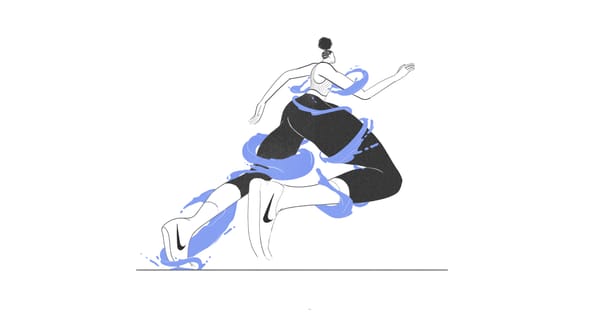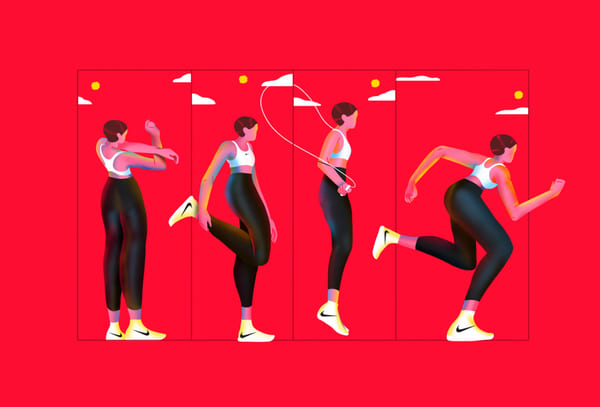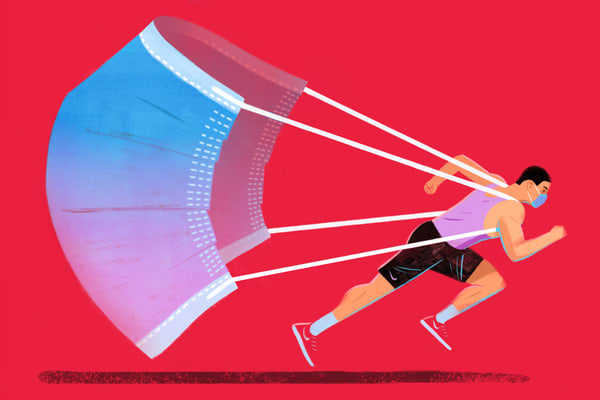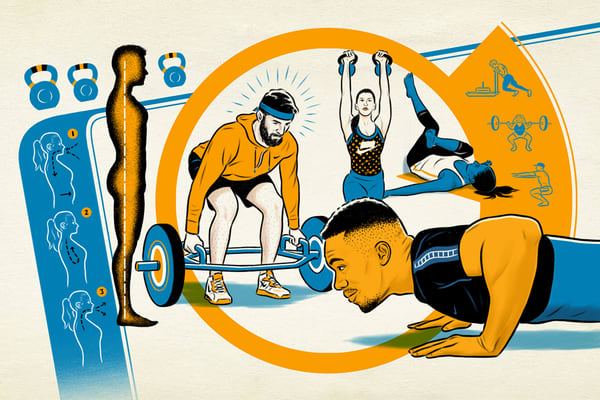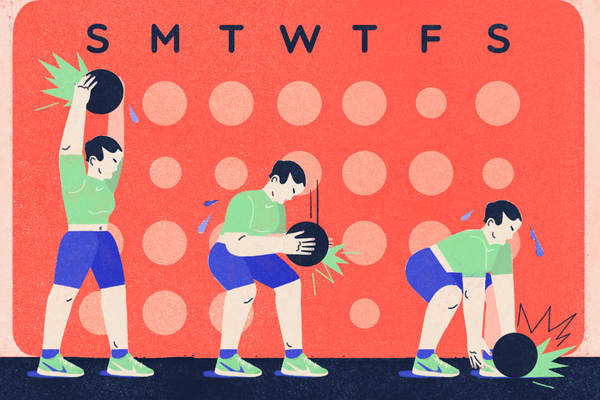Learn to Love the Treadmill
Coaching
It's totally possible to actually enjoy training in place with these tips that'll turn you into a running machine.

There's something about soaking in new views, feeling the sunshine on your skin and the breeze in your hair, and seeing where your legs take you (to a coffee shop? to a friend's place? over a cool bridge?) that makes running outside pretty freakin' incredible. But that doesn't mean that running on a treadmill has to be the opposite.
"The only time the treadmill is boring is when you just set it and forget it", says Nike Run Club Coach Jessica Woods, describing the mistake most of us make (oops!). Of course, running on a machine can never replicate the experience of trotting freely on the road or trail, but it's not meant to.
"The whole point of the tread is to use it as a tool", says Woods, who manages the treadmill studio Mile High Run Club in New York City. Learn how to do this (tips and workouts, below), and you can stay engaged while enhancing your run and your fitness—and finally remove "dreadmill" from your vocab.
But first, if you need more convincing to embrace the tread, know that:
A Treadmill Gives You Control
Running indoors nixes inherent obstacles, like potholes and wind resistance, not to mention performance crushers like extreme temperatures, humidity and, depending on your route, constant red lights, says Woods. Plus, outside, you're at the mercy of a GPS watch and how accurate it is at determining pace and distance. That's if you're even wearing a watch.
Having control over the variables of your run could help you stick to your pace and make it easier to log more miles.
Treadmills Tend to Be Easier on Your Body
Anyone who runs on the road knows that concrete isn't very forgiving on the joints, though that should never stop you from enjoying an outdoor sesh. The treadmill, however, has a padded belt that can offer better shock absorption (a bit like a trail and some tracks) for your ankles, knees and hips, lowering your risk of injury, says Nike Senior Director of Global Running, Chris Bennett (aka Coach Bennett). Treating those weight-bearing joints to a nice, cushioned tread workout can help you feel less beat up when you train outdoors—and for many years to come.
"The only time the treadmill is boring is when you just set it and forget it".
Jessica Woods
Nike Run Club Coach
Running Indoors Is a Great Workout
There's no replacement for running outside, especially if you're training for a race. Still, treadmill runs are effective—and not just on rainy, cold days. Running on a belt lets you target an exact pace versus guessing or looking at your watch constantly, so it's particularly good for speed workouts, says Woods. You can also hike up the incline as high as you want.
And though a treadmill might feel easier, the way your body moves isn't significantly different when you run on a machine versus outside, according to a recent review in the journal Sports Medicine. Treadmill running also has a similar effect as running outdoors does on your VO2 max, or how efficiently your body uses oxygen, a major benchmark for cardio fitness.
Pro tip: For any tread workout on "flat ground", set the incline to 1 percent to mimic the changing terrain of Mother Earth. That'll also counteract any decrease in muscle activation that the motorised belt helping move your feet along might invite, says Woods.
How to Get the Most Out of the Treadmill
Now that you're sold on the upsides of the machine (assuming so, since you're still reading), here's how to make training on it even more effective—and fun.
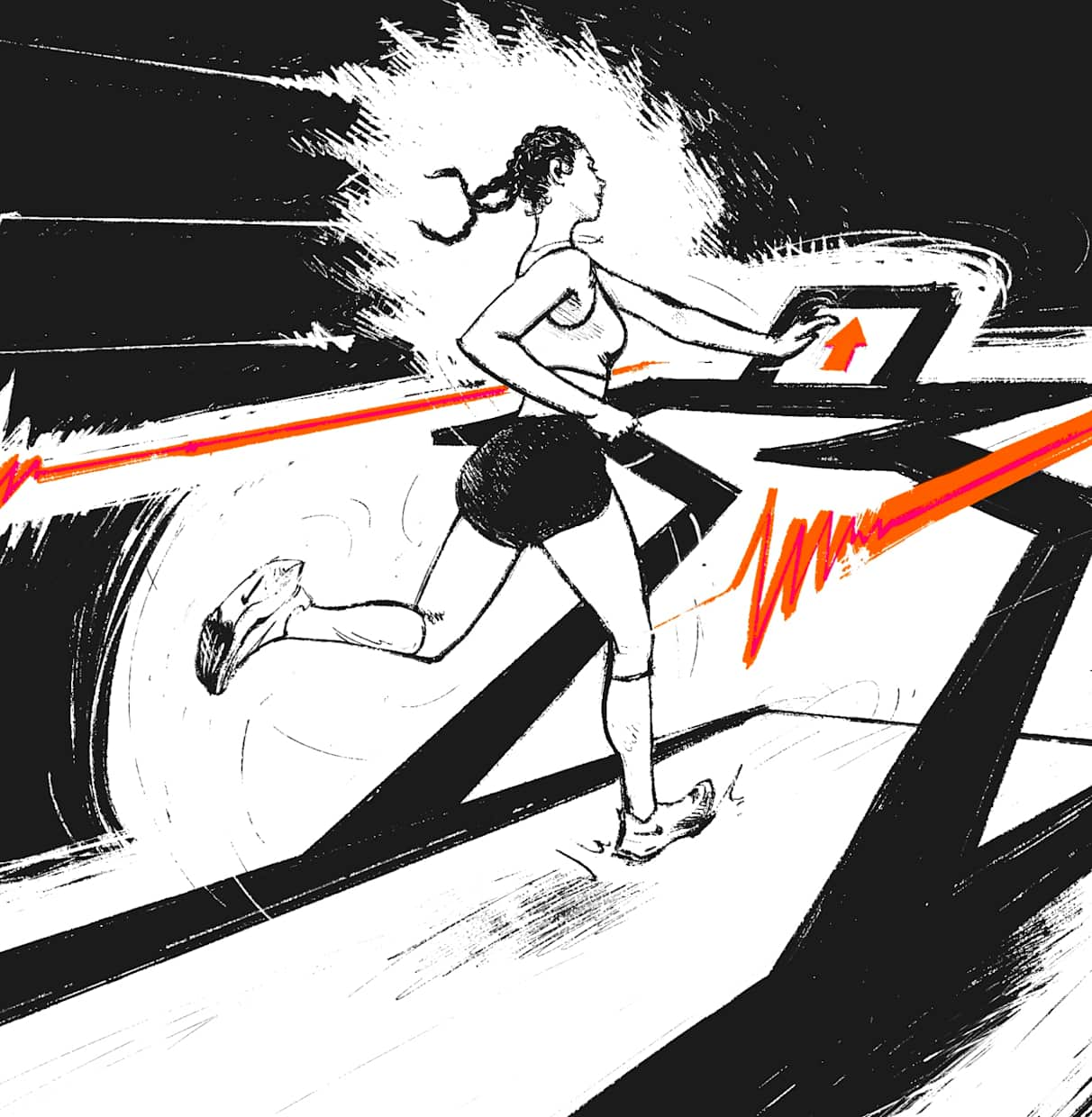
1. Ease In
Any time you run, it's essential to warm up, and that's especially true if you're using a treadmill for high-intensity speed or interval work. "Warming up means you're going to increase blood flow and body temperature, plus improve your coordination and range of motion", says NRC Chicago Coach Robyn LaLonde. "All of these work together to improve your form and speed".
Try It: Jog (like, a legit easy jog) for 5 to 10 minutes, and follow that with a few activation drills—say, a series of high-knee skips, butt kicks, walking lunges or leg swings—off the tread that will further loosen up your muscles. From there, you're primed to pick up the pace.
2. Check Your Form and Position
No one wants to fall off the treadmill (been there, done that), so people tend to crowd the console (you know, run too closely to the front of the machine). But doing that means you can't hit your natural stride, agree Woods and Coach Bennett. Coach Bennett's advice: "Check in every now and again, and if you find yourself hugging the display, back off a little".
Even if you get tired, avoid the temptation to hold on to the treadmill arms, says Woods. Relying on the handrails can screw up your stride, she explains. If you've jacked up the speed so high that you need to hang on for dear life, that's a good sign to lower it.
Finally, and we have to say it, save the texts and calls for after your workout. When you're running on a moving belt, you need to limit distractions. Unless, of course, you want to end up in a viral video.
3. Speed Up and Slow Down (Again and Again)
Interval training—pushing yourself, then recovering, usually for a set amount of time—strengthens your legs and builds speed. The beauty of doing it on the treadmill, aside from keeping your mind and body engaged, is that you eliminate guesswork to hit a certain pace.
"The tread lets you hone in on those specific paces", says Woods. "It's like muscle memory; the more familiar you are with that exact pace, the better you'll be able to hit that same feeling outside".
Try It: There are infinite ways to plan intervals into your training. One of Woods' favourites is a ladder workout, where you gradually increase your effort. Run for 3 minutes at a 10K pace (or 80% effort), 2 minutes at a 5K pace (90% effort), then 1 minute at a mile-race pace (100% effort), giving yourself 90 seconds of rest after each bout. Beginners, try the sequence once through; advanced runners, shoot for two or three times. For more interval workout ideas, check out the NRC app.
"Running on a belt lets you target an exact pace versus guessing or looking at your watch constantly, so it's particularly good for speed workouts".
Jessica Woods
Nike Run Club Coach
4. Crank Up the Incline
Playing with the incline throughout your run keeps things interesting and helps strengthen your glutes, quads and cardiovascular system, says Woods.
That's because hills are basically speed work in disguise, she says. An incline adds resistance, which forces you to increase your power output. That's going to improve your calorie burn, muscle strength and stride in the same way running faster would, and it will improve your form too. Running uphill also strengthens the explosive, fast-twitch muscles in your legs, which translates to faster speed on flat ground.
Try It: This 20-minute workout takes you through "rolling hills". Run at an easy, comfortable pace for 2 minutes on a flat treadmill (0% incline). Increase the incline to 1% for 1 minute, increase the incline to 2% for 1 minute, then lower the incline to 0% for 1 minute. Increase the incline to 4% for 1 minute, then lower to 0% for 1 minute. Increase the incline to 2% for 1 minute, then lower to 1% for 1 minute. Increase the incline to 3% for 1 minute, then lower to 2% for 1 minute. Increase the incline to 5% for the steepest part of your run. From there, continue alternating between lowering your incline and increasing it until you hit 18 minutes, then cool down on a flat treadmill for the last 2 minutes. Maintain your speed throughout or run faster than a comfortable pace for a greater challenge.
(P.S. You can find a version of this workout as a Guided Run, called "The Rollercoaster", on NRC.)
5. Don't Feel Bad About Walking
Just because the belt is moving doesn't mean you need to be gunning it. "If you're doing intervals, try bringing the speed down to a walk for the recoveries until your breath comes back or your heart rate comes back down", says Woods. The harder the interval work, the harder you want to recover. That way you can max out your effort on the next interval, she explains.
You can also use the treadmill to just walk, intervals or not. "It's great to fatigue the legs without actually running", says Woods, noting that walking on a tread is a prime way to cross-train. "If you want to up the effort without increasing speed, keep your pace at a walk while increasing the incline".
Try It: Turn any of the workouts above into a walking workout—especially the incline one—by slowing your pace to a walking speed, which is typically 4-ish mph or less.
6. Always Cool Down
Finishing with an easy jog or brisk walk will help you ease out of your workout the same way a warm-up helps you ease into it. "You don't want to slam on the brakes after a workout", says Woods. "A cool-down kick-starts the healing process of sending blood flow to help repair the muscles", she says, something you definitely need if you want to get back out (or in) there.
Try It: Slow your speed to 4.5 mph or lower and jog or walk for 5 to 10 minutes (if you're pressed for time, even 2 minutes helps). Then wipe down your machine and go about your day.
So there you have it: Three reasons—and five workouts—to never call the treadmill the "dreadmill" again.
Words: Ashley Mateo
Illustration: Yué Wu

Take It Further
For more expert-backed guidance on movement, as well as mindset, nutrition, recovery and sleep, check out the Nike Training Club App.
Take It Further
For more expert-backed guidance on recovery, as well as mindset, movement, nutrition and sleep, check out the Nike Training Club App.
